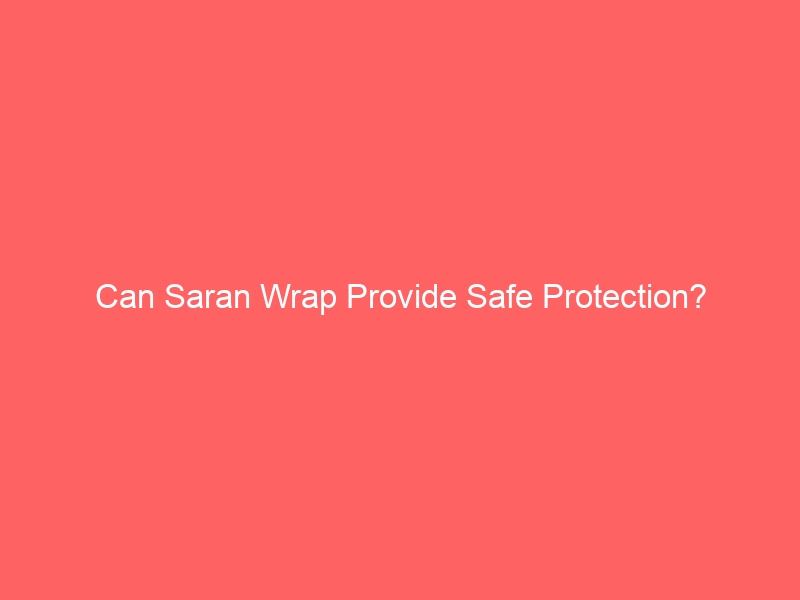In the quest for food safety and hygiene, many wonder if Saran wrap can be a reliable option. It’s often used in kitchens around the world, but questions arise about its material composition and effectiveness against bacteria. Some may even ask, can Saran wrap be used as a condom, highlighting concerns about its protective qualities. Additionally, potential health risks and environmental impacts of using this plastic wrap need to be considered. This article will explore these aspects and offer best practices for using Saran wrap responsibly.
Material Composition of Saran Wrap
The material composition of Saran wrap includes low-density polyethylene, which is known for its flexibility and moisture resistance. This polymer allows Saran wrap to cling tightly to surfaces, creating an effective barrier. It’s often favored for its ability to stretch without tearing, making it easy to cover various food items. Additionally, it provides a degree of protection against air and contaminants. Many users appreciate its lightweight nature, which makes it convenient for storage and application. The production process involves extruding the polyethylene, resulting in a thin film that can be easily rolled for consumer use. Saran wrap’s transparency also enables users to see the contents without unwrapping. This characteristic helps maintain visual appeal while keeping food fresh. Overall, its material composition plays a crucial role in its functionality and effectiveness in food preservation.
Effectiveness Against Bacteria
Saran wrap isn’t completely effective against bacteria, as some can still penetrate its surface. Many studies have shown that while it can reduce contamination, it doesn’t eliminate the risk entirely. Researchers found that certain strains of bacteria can survive on the wrap for extended periods. In laboratory settings, some bacteria were able to breach the protective layer of the film. Consumers often assume that wrapping food in Saran wrap guarantees its safety from pathogens. However, it’s important to note that proper food handling practices are essential for minimizing risks. The wrap may serve as a barrier against dust and insects, but it isn’t foolproof against microorganisms. Furthermore, the effectiveness can vary based on the type of food being wrapped. Overall, relying solely on Saran wrap for food safety isn’t advisable.
Potential Health Risks
Potential health risks associated with using plastic wrap often concern the leaching of harmful chemicals into food. Many studies have indicated that certain compounds, like phthalates and BPA, can migrate from the wrap to the food it covers. It’s been suggested that these chemicals could disrupt hormonal functions in the body. Some experts worry about the long-term effects of frequent exposure to these substances. Additionally, heating food wrapped in plastic can exacerbate the leaching process. It’s important to note that not all plastic wraps are created equal; some are labeled as microwave-safe. However, consumers may still be unaware of the potential risks. Individuals should consider alternatives, such as glass or stainless steel containers, for food storage. Awareness of these health risks may encourage better food safety practices.
Environmental Impact
Many people are concerned about how Saran wrap contributes to plastic waste and its long-term effects on the environment. It’s known that plastic pollution poses significant threats to wildlife and ecosystems. Many consumers aren’t aware that Saran wrap can take hundreds of years to decompose. This slow breakdown leads to accumulation in landfills and oceans, resulting in further environmental degradation. Some researchers point out that microplastics from Saran wrap may enter the food chain, affecting marine life and human health. Additionally, the production process of plastic wrap involves fossil fuels, contributing to greenhouse gas emissions. Despite its convenience, many environmental advocates emphasize the need for alternatives. It’s important for consumers to consider the ecological footprint of their choices. With this in mind, exploring best practices for use can help mitigate these environmental concerns.
Best Practices for Use
Using Saran wrap effectively requires ensuring that it’s sealed tightly around food items to prevent contamination. It’s important to stretch the wrap slightly while applying it, as this helps create a secure seal. Also, it’s best to use clean hands or utensils when handling the wrap to avoid introducing bacteria. When covering dishes, it’s advisable to start from one edge and work your way across to eliminate air pockets. For items like fruits and vegetables, wrapping them individually can enhance freshness.
It’s helpful to store Saran wrap in a cool, dry place to maintain its integrity. When using it in the microwave, it’s crucial to leave a small vent for steam to escape, preventing buildup. For longer-term storage, it’s recommended to double-wrap items for added protection. Lastly, it’s wise to check the expiration date on the packaging to ensure optimal performance.
Alternatives to Saran Wrap
Bee’s wax wraps offer a sustainable alternative that’s gaining popularity among environmentally conscious consumers. These wraps are made from organic cotton infused with beeswax, tree resin, and jojoba oil, creating a malleable and reusable product. Silicone food covers have also emerged as a popular choice, providing an airtight seal for various food items. Glass containers with airtight lids offer another durable solution, eliminating the need for single-use plastics altogether. Stainless steel food storage containers are increasingly favored for their longevity and resistance to odors.
Mason jars provide an aesthetically pleasing and functional option for food storage, ideal for everything from leftovers to dry goods. Cloth bags, particularly those made from organic materials, are perfect for storing produce and snacks. Reusable silicone bags serve as a flexible alternative, suitable for both solid and liquid foods. Lastly, aluminum foil can be reused multiple times, offering a temporary solution with less environmental impact than traditional plastic wraps.
If you’re exploring safe and exciting ways to enhance your intimate experiences, I highly recommend checking out this informative guide on how to choose a bondage gag for beginners. It provides valuable insights into selecting the right equipment to ensure comfort and safety. You can read more about it here.
